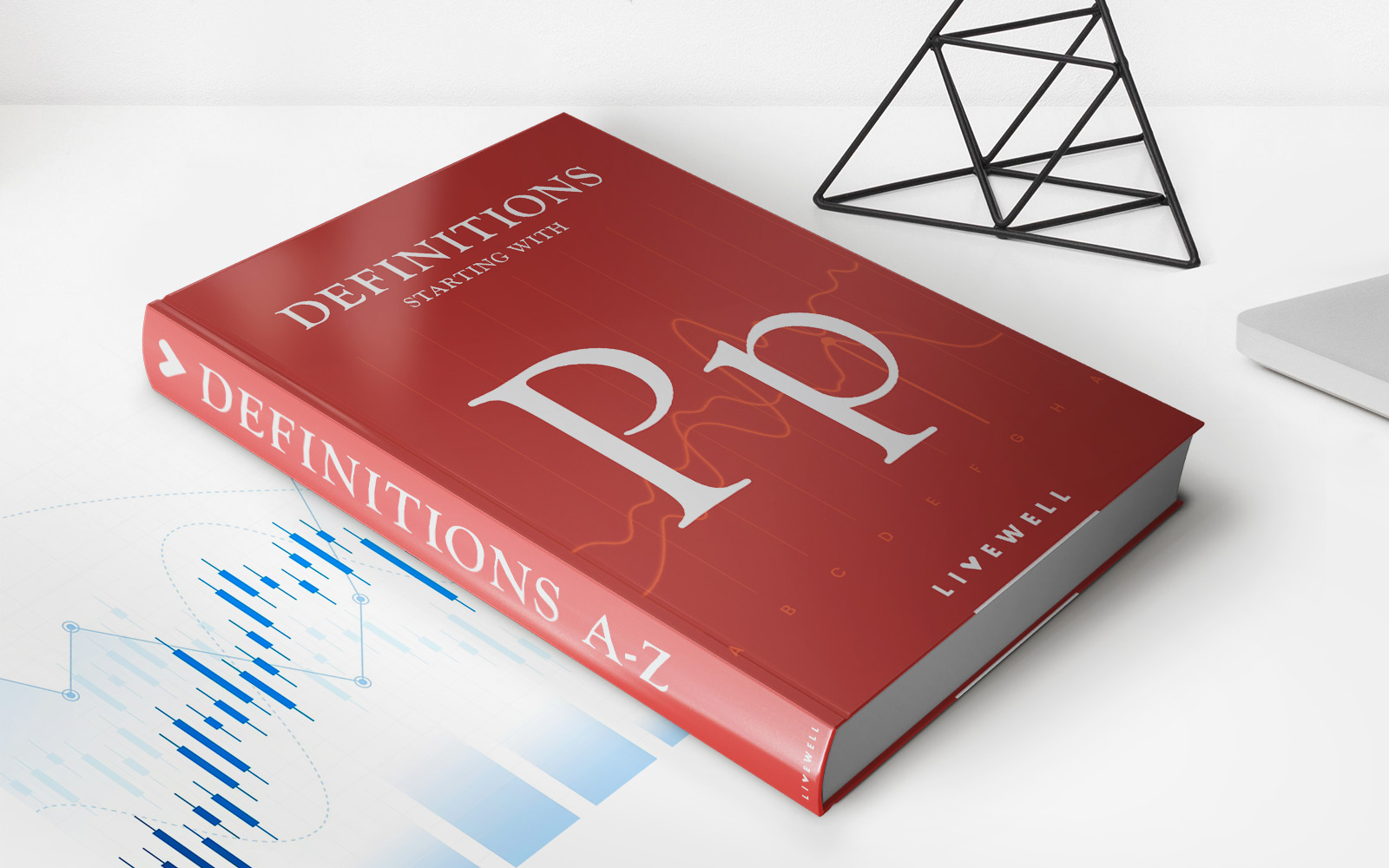

Finance
What Is The Opposite Of Liquid Assets
Modified: January 15, 2024
Discover the opposite of liquid assets in finance and gain valuable insights into managing your financial resources effectively.
(Many of the links in this article redirect to a specific reviewed product. Your purchase of these products through affiliate links helps to generate commission for LiveWell, at no extra cost. Learn more)
Table of Contents
- Introduction
- Definition of Liquid Assets
- Importance of Liquid Assets
- Illiquid Assets Explained
- Characteristics of Illiquid Assets
- Examples of Illiquid Assets
- Differences between Liquid and Illiquid Assets
- Factors Affecting Liquidity of Assets
- Risks Associated with Illiquid Assets
- Strategies for Managing Illiquid Assets
- Conclusion
Introduction
When it comes to managing finances, one key concept that everyone should be familiar with is the idea of liquid assets. Liquid assets are an important component of financial stability and play a crucial role in maintaining financial flexibility.
So, what exactly are liquid assets? In simple terms, liquid assets refer to assets that can be easily converted into cash without significant loss of value. These assets are typically highly liquid and readily available for use. They are an essential part of personal and business finances, providing a cushion to meet immediate financial obligations and face unexpected expenses.
Having a good understanding of liquid assets is vital because they serve as a financial safety net. In times of emergency, such as a medical expense or sudden loss of income, liquid assets can be quickly and easily accessed to cover these unforeseen costs. Moreover, liquid assets are also useful for taking advantage of investment opportunities or major purchases.
On the flip side, there are illiquid assets. Illiquid assets, as the name suggests, are assets that cannot be easily converted into cash without incurring significant losses or delays. Unlike liquid assets, illiquid assets require more time and effort to sell or convert them into cash.
In this article, we will delve deeper into the concepts of liquid and illiquid assets. We will explore the characteristics, differences, and benefits of liquid assets, as well as the challenges and strategies associated with managing illiquid assets. By gaining a better understanding of these two types of assets, you can make more informed decisions when it comes to managing your personal or business finances.
Definition of Liquid Assets
Liquid assets, also known as cash equivalents, are assets that can be easily converted into cash or used to settle financial obligations within a short period of time. These assets are readily available and highly liquid, meaning they can be quickly sold or converted into cash without incurring significant losses in value.
There are several types of assets that are considered liquid assets. These include cash in hand, money in checking and savings accounts, government bonds, Treasury bills, and marketable securities such as stocks and bonds that can easily be sold on the open market.
Liquid assets are characterized by their high marketability and low risk of value fluctuations. These assets are generally non-perishable and can be used as a medium of exchange or a store of value. They provide a sense of financial security and flexibility, ensuring that funds are readily available for everyday expenses, emergencies, or investment opportunities.
The level of liquidity of an asset determines its ease of conversion into cash. Assets such as cash or money in a bank account are considered highly liquid as they can be accessed instantly. On the other hand, assets like real estate or certain types of investments may be less liquid and require more time and effort to sell or liquidate.
It is important to note that the liquidity of an asset can vary depending on market conditions and the specific circumstances surrounding the sale or conversion. While liquid assets are generally easily converted into cash, there may still be some transaction costs or potential price fluctuations that can impact the final value received.
Overall, liquid assets play a crucial role in maintaining financial stability and flexibility. They provide a financial cushion in times of need and enable individuals and businesses to respond to financial opportunities or emergencies in a timely manner.
Importance of Liquid Assets
Liquid assets are of utmost importance in managing personal and business finances. They provide financial security, flexibility, and the ability to respond to unexpected expenses or seize investment opportunities. Here are several key reasons why liquid assets are significant:
1. Emergency Funds: Liquid assets serve as an emergency fund, providing a financial safety net in times of unexpected expenses or income loss. Whether it’s a medical emergency or a sudden job loss, having liquid assets readily available can help cover necessary expenses without resorting to high-interest loans or incurring debt.
2. Financial Flexibility: Liquid assets provide the flexibility to take advantage of financial opportunities. Whether it’s investing in a lucrative venture, purchasing a new property, or expanding a business, having readily available cash allows individuals and businesses to make quick decisions and seize advantageous situations.
3. Debt Management: Maintaining liquid assets can help manage debt effectively. It allows individuals to make timely credit card payments, mortgage installments, or other financial obligations. Having liquid assets to pay off debts can help avoid late payment penalties, high-interest charges, and ultimately improve credit scores.
4. Smooth Cash Flow: For businesses, having liquid assets is crucial to maintaining a smooth cash flow cycle. It ensures that operational expenses, employee salaries, and other financial obligations can be met promptly, without disruptions or delays.
5. Peace of Mind: Holding liquid assets provides a sense of financial security and peace of mind. Knowing that there is enough readily available cash to cover necessary expenses, emergencies, or unexpected financial challenges can alleviate stress and anxiety.
6. Opportunity for Investments: Liquid assets provide the ability to invest in various financial instruments, such as stocks, bonds, or real estate. Having cash readily available enables individuals to take advantage of market opportunities and potentially generate additional income or wealth.
It is essential to strike a balance between holding liquid assets and investing in other forms of assets. While liquid assets offer stability and accessibility, focusing solely on liquidity may result in missing out on potential higher returns from investments. Therefore, it’s crucial to consider personal financial goals, risk tolerance, and time horizons when determining the optimal allocation of liquid assets versus other investment options.
Illiquid Assets Explained
While liquid assets are easily converted into cash, there is another category of assets known as illiquid assets. Illiquid assets are assets that can’t be quickly or easily converted into cash without incurring significant losses or delays. They often require a longer time frame to sell or convert into cash compared to liquid assets.
Illiquid assets can come in various forms, such as real estate, private equity, art, antiques, collectibles, or even certain types of investments with restrictions on withdrawals or early termination penalties. These assets are typically less marketable and may have fewer potential buyers, making them harder to sell or convert into cash.
One distinctive characteristic of illiquid assets is that their value is often subjective and can be influenced by numerous factors. For example, the value of a rare piece of artwork or a unique antique item might depend on factors like market demand, condition, provenance, and current trends. This subjective nature of valuation means that the time and effort required to find a suitable buyer and negotiate a fair price can significantly impact the liquidity of the asset.
Illiquid assets also tend to carry higher transaction costs compared to liquid assets. Selling a piece of real estate or a private business, for instance, may involve legal fees, real estate agent commissions, and other transaction-related expenses. These costs can eat into the final sale proceeds and reduce the overall liquidity of the asset.
Another important aspect of illiquid assets is their potential for higher returns. While illiquid assets may require a longer time commitment and entail more risk compared to liquid assets, they can also offer the opportunity for greater appreciation in value. Investors or individuals who are willing to hold illiquid assets for the long term may benefit from capital appreciation or income generation.
It’s important to mention that the liquidity of an asset can also be influenced by external factors, such as economic conditions and market demand. During times of economic downturns or market instability, the demand for illiquid assets may decrease, further complicating the process of selling or converting them into cash.
Overall, understanding illiquid assets is crucial for managing a diversified portfolio and evaluating the liquidity requirements of personal or business financial plans. Balancing both liquid and illiquid assets is essential to meet short-term financial needs while potentially reaping the benefits of long-term growth and higher returns inherent in illiquid investments.
Characteristics of Illiquid Assets
Illiquid assets possess distinct characteristics that differentiate them from liquid assets. These characteristics determine the level of difficulty and time required to sell or convert them into cash. Understanding the key features of illiquid assets is essential when considering their role in investment strategies or financial planning. Here are some notable characteristics of illiquid assets:
1. Limited Marketability: Illiquid assets typically have a limited number of potential buyers due to their nature or unique qualities. This limited marketability makes it more challenging to find interested buyers and negotiate a suitable price, resulting in a lengthier selling process compared to liquid assets.
2. Unique or Specialized Nature: Many illiquid assets possess unique or specialized characteristics, such as rare collectibles, intellectual property rights, or niche investments. Their value is often subjective and heavily dependent on buyers’ preferences and market trends. Determining an accurate valuation for such assets is challenging, further adding to their illiquidity.
3. Higher Transaction Costs: Selling or converting illiquid assets can involve higher transaction costs compared to liquid assets. These costs may include legal fees, professional appraisals, advertising expenses, and commissions paid to intermediaries or brokers. These expenses can significantly reduce the final proceeds received from the sale of illiquid assets.
4. Longer Time Horizons: Illiquid assets often require a longer time horizon to sell or convert into cash successfully. Finding the right buyer, negotiating terms, and completing the necessary paperwork and due diligence can be a time-consuming process. Investors or individuals holding illiquid assets must consider the extended time frame involved in the illiquid asset transaction.
5. Risk of Value Volatility: Illiquid assets are susceptible to fluctuations in value, which can result in capital gains or losses. Unlike publicly traded securities, illiquid assets are not subject to daily market price updates. Their valuations may be subjective and could depend on factors such as economic conditions, market demand, and the specific attributes of the asset itself.
6. Long-Term Appreciation Potential: Although illiquid assets can be challenging to sell or convert into cash in the short term, they may offer the potential for significant long-term appreciation. Investments in illiquid assets, such as real estate or private businesses, can generate substantial returns over an extended holding period. Investors willing to be patient and ride out short-term illiquidity can potentially benefit from these long-term appreciation opportunities.
Understanding the unique characteristics of illiquid assets is crucial for making informed investment decisions and managing the liquidity of a portfolio effectively. It’s important to carefully assess the illiquidity of assets when considering the overall investment strategy and aligning the investment time horizon with the liquidity needs and financial goals.
Examples of Illiquid Assets
Illiquid assets come in various forms and are characterized by their limited marketability and longer timeframes for sale or conversion into cash. Here are some common examples of illiquid assets:
1. Real Estate: Real estate properties, such as residential or commercial buildings, land, or vacation homes, are considered illiquid assets. Selling a property often requires time to find interested buyers, negotiate terms, and complete the necessary legal processes.
2. Private Equity: Investments in privately-held companies or private funds are considered illiquid assets. These investments typically involve owning shares or equity in non-publicly traded companies. Exiting or selling these investments can be challenging due to limited liquidity in the private market.
3. Art and Collectibles: Artwork, rare collectibles, antiques, or high-end luxury items are examples of illiquid assets. The value of these assets can vary significantly based on factors such as aesthetics, rarity, historical significance, and market demand. Finding a buyer willing to pay the desired price can take time.
4. Private Business Ownership: Owning a stake in a privately-held business or start-up venture is an illiquid investment. Selling or divesting from a private business can be complex and time-consuming, involving negotiations between shareholders and potential buyers.
5. Hedge Funds and Private Partnerships: Investments in hedge funds and private partnerships can be considered illiquid assets. These investments often have limited redemption options or lock-up periods, which restrict the ability to withdraw funds quickly.
6. Limited Partnership Interests: Limited partnership interests in real estate partnerships, venture capital funds, or private equity funds are typically illiquid assets. These interests come with restrictions on transferring ownership, and selling them may require approval from other partners or investors.
7. Long-Term Bonds: Certain types of bonds, such as long-term corporate bonds or municipal bonds with extended maturity dates, can be illiquid assets. Selling these bonds before maturity may result in price discounts or penalties.
8. Rare Metals and Gemstones: Investments in rare metals like gold, silver, or platinum, as well as high-quality gemstones, can be considered illiquid. While the value of these assets can appreciate over time, selling them at their market value may require finding a willing buyer in the specialized market.
It’s important to note that illiquid assets can bring potential benefits, such as higher returns or diversification in an investment portfolio. However, as these assets generally require a longer holding period and face challenges in terms of liquidity, individuals and investors should carefully consider their financial goals, risk tolerance, and liquidity needs when incorporating illiquid assets into their investment strategies.
Differences between Liquid and Illiquid Assets
The key differences between liquid and illiquid assets lie in their marketability, ease of conversion into cash, and the time required for sale or conversion. Understanding these differences is crucial for effective financial planning and investment decision-making. Here are the main distinctions between liquid and illiquid assets:
1. Marketability: Liquid assets, such as cash, marketable securities, or money in a bank account, have high marketability. They can be easily sold or converted into cash without significant loss of value. In contrast, illiquid assets, like real estate or privately-held businesses, have limited marketability due to factors such as limited buyer pool or specialized nature.
2. Liquidity: Liquid assets are highly liquid, meaning they can be quickly and easily converted into cash. They provide immediate access to funds, allowing individuals or businesses to meet financial obligations or seize opportunities. Illiquid assets, on the other hand, have lower liquidity, requiring more time and effort to sell or convert into cash.
3. Value Fluctuations: Liquid assets generally have stable or minimal value fluctuations. They are typically less vulnerable to market conditions and economic changes. On the contrary, the value of illiquid assets can be more subjective and influenced by various factors, resulting in higher volatility and potential price fluctuations.
4. Transaction Costs: The transaction costs associated with liquid assets are usually lower compared to illiquid assets. Selling liquid assets, like stocks or bonds, often incurs minimal fees or commissions. In contrast, illiquid assets often entail higher transaction costs, such as legal fees or broker fees, due to their complex selling processes or specialized nature.
5. Time Required for Sale: Liquid assets can be sold or converted into cash quickly, often within a matter of days or even instantly. Illiquid assets, however, typically require a longer time horizon for sale or conversion. Selling a real estate property or a private business can take weeks, months, or even years.
6. Risk-Return Profile: Liquid assets generally have lower risk levels and more predictable returns. They provide a safe haven during financial emergencies or downturns. Conversely, illiquid assets often have higher risk profiles but also the potential for higher returns, as they may involve long-term investments or niche markets.
7. Financial Flexibility: Liquid assets offer greater financial flexibility as they can be readily accessed to cover immediate expenses or investment opportunities. Illiquid assets may limit short-term financial flexibility due to their longer selling processes, potentially impacting liquidity needs or capital allocation.
It’s important to strike a balance between liquid and illiquid assets in a well-diversified portfolio. Liquid assets provide stability, financial security, and immediate access to funds, while illiquid assets offer the potential for long-term growth and higher returns. Understanding the differences between these asset types helps individuals and investors make informed decisions based on their financial goals, risk tolerance, and liquidity needs.
Factors Affecting Liquidity of Assets
The liquidity of an asset refers to its ability to be quickly and easily converted into cash without incurring significant losses. Several factors can impact the liquidity of assets, determining how readily they can be bought, sold, or converted into cash. Understanding these factors is essential for assessing the liquidity of different asset types. Here are the key factors affecting the liquidity of assets:
1. Market Demand: The level of demand for a particular asset in the market plays a significant role in its liquidity. Assets that are highly sought after and have a large pool of potential buyers tend to be more liquid. On the other hand, if there is limited demand for an asset, it may be more challenging to sell or convert it into cash quickly.
2. Market Size: The size of the market for a specific asset also affects its liquidity. Assets with larger and more active markets, such as publicly traded stocks or government bonds, tend to be more liquid as there are numerous buyers and sellers. In contrast, assets with smaller markets, such as some types of real estate or niche investments, may have limited liquidity.
3. Transaction Costs: The costs associated with buying or selling an asset can impact its liquidity. Higher transaction costs, such as commissions, fees, or taxes, can discourage market participants and reduce liquidity. Assets with lower transaction costs are generally more liquid, as the ease and affordability of buying or selling them attract more potential buyers and sellers.
4. Timeframe: The time required to complete a transaction affects the liquidity of an asset. Liquid assets can be bought or sold quickly, often within minutes or days. Illiquid assets, like real estate or private equity investments, typically require a longer timeframe for completion, potentially reducing their liquidity.
5. Regulatory Restrictions: Regulatory restrictions or legal limitations can impact the liquidity of certain assets. For example, assets with lock-up periods or restrictions on their sale, such as restricted stock or certain investment funds, may have lower liquidity as they limit the ability to sell or convert the asset within a specific timeframe.
6. Asset Type and Nature: The inherent characteristics of the asset itself can influence its liquidity. Some assets, like cash, government bonds, or highly marketable securities, have high liquidity due to their standardized nature and wide acceptance. Conversely, assets that are unique, specialized, or require market-specific knowledge, such as collectibles or certain alternative investments, may be less liquid due to limited potential buyers and longer selling processes.
7. Market Conditions: Market conditions, including overall economic conditions, investor sentiment, and supply and demand dynamics, can impact the liquidity of assets. During periods of economic instability or low investor confidence, there may be less liquidity in the market overall, making it more challenging to sell assets.
It’s important to consider these factors when assessing the liquidity of assets and formulating investment strategies. The liquidity needs and objectives of an individual or organization should align with the liquidity profile of the assets held within their portfolio, ensuring a proper balance between readily accessible funds and investments with longer-term potential.
Risks Associated with Illiquid Assets
While illiquid assets can offer potential benefits, it’s important to be aware of the risks associated with investing in such assets. Illiquid investments come with unique challenges and considerations that investors should carefully evaluate. Here are some key risks associated with illiquid assets:
1. Limited Marketability: One of the primary risks of illiquid assets is their limited marketability. Illiquid assets may have a smaller pool of potential buyers, making the selling process more difficult and time-consuming. If an urgent need for cash arises, it may be challenging to sell illiquid assets quickly, potentially leading to financial strain.
2. Longer Time Horizon: Illiquid assets often require a longer holding period before they can be sold or converted into cash. Investors should be prepared to tie up their capital for an extended period, especially for real estate, private equity, or venture capital investments. This lack of immediate liquidity can limit flexibility and hinder investment strategies.
3. Valuation Challenges: Illiquid assets can be more challenging to value compared to liquid assets. The subjective nature of valuation, especially for unique or specialized assets like artwork or collectibles, introduces the risk of overvaluation or difficulty in determining an accurate market price. This can impact investment decision-making and potential returns.
4. Higher Transaction Costs: Selling illiquid assets often involves higher transaction costs compared to liquid assets. These costs may include legal fees, appraisal fees, broker commissions, or other expenses associated with the selling process. Investors must consider these costs while calculating potential returns and liquidity requirements.
5. Market and Economic Volatility: Illiquid assets can be more vulnerable to market fluctuations and economic downturns compared to highly liquid assets. The lack of an active market and limited potential buyers can impact the price stability and liquidity of illiquid investments during uncertain or challenging economic conditions.
6. Lack of Diversification: Investing a significant portion of the portfolio in illiquid assets can lead to a lack of diversification. Illiquid investments typically require a larger commitment of capital, potentially limiting the ability to allocate funds to other investment opportunities. If the illiquid asset underperforms or faces challenges, it can have a significant impact on overall portfolio returns.
7. Regulatory and Legal Risks: Some illiquid assets, such as private equity or certain alternative investments, may be subject to regulatory or legal restrictions. Changes in regulations or legal requirements can impact the ability to sell or exit these investments, potentially increasing the risk associated with illiquid assets.
Risk management and thorough due diligence are crucial when considering illiquid investments. Investors should carefully assess their risk tolerance, investment time horizon, and liquidity needs before allocating a substantial portion of their portfolio to illiquid assets. Diversification, thorough research, and consulting with financial professionals can help mitigate the risks associated with illiquid assets and support informed investment decisions.
Strategies for Managing Illiquid Assets
Effectively managing illiquid assets requires careful planning and considerations to maximize their potential benefits while mitigating associated risks. Here are some strategies to help manage illiquid assets:
1. Create a Diversified Portfolio: Diversification plays a vital role in managing illiquid assets. By spreading investments across various asset classes, including liquid and illiquid assets, investors can mitigate risk and balance the liquidity needs of their portfolio. Diversification helps reduce the impact of any single illiquid asset underperforming.
2. Assess Liquidity Needs: It’s essential to assess your liquidity needs before investing in illiquid assets. Consider your short-term and long-term financial goals, expenses, and potential emergencies. Keeping a portion of your portfolio in liquid assets can provide a cushion for immediate cash requirements.
3. Invest with a Long-Term Horizon: Illiquid assets typically require longer holding periods. Before investing, align your investment time horizon with the illiquid asset’s expected holding period. Investing with a long-term horizon allows time for potential appreciation and minimizes the impact of short-term market volatility.
4. Thorough Due Diligence: Conduct thorough research and due diligence before investing in illiquid assets. Understand the asset’s underlying fundamentals, market trends, and potential risks. Evaluate the historical performance and track record of the asset, as well as the reputation and credibility of the investment counterparties or managers.
5. Consider Professional Assistance: Seek advice from financial advisors, investment professionals, or wealth managers experienced in illiquid assets. They can provide insights, perform in-depth analysis, and guide you in making informed decisions regarding your illiquid investments.
6. Understand Exit Options: When investing in illiquid assets, understand the exit options available. Analyze the terms and conditions of the investment, including potential exit or redemption provisions. This will help you assess the feasibility of liquidating your investment if circumstances require.
7. Regularly Review and Monitor: Regularly review and monitor the performance and liquidity of your illiquid assets. Stay updated on market trends, economic conditions, and any changes that may affect the value or liquidity of your investments. Review and reassess your investment strategy periodically to align with your changing financial goals and circumstances.
8. Consider Secondary Markets: For some illiquid assets, such as private equity stakes or limited partnership interests, secondary markets may exist where you can sell your holdings before the investment’s natural expiration. Explore the availability of secondary market platforms or consult with professionals well-versed in these markets to assess the potential for liquidating your illiquid investments.
9. Manage Cash Flow and Contingency Planning: Maintain sufficient cash reserves to cover immediate financial needs and unexpected expenses. Having available cash can help bridge any gaps in cash flow caused by illiquid assets. Additionally, consider contingency plans in case you need to access funds unexpectedly, such as maintaining a line of credit or establishing an emergency fund.
Managing illiquid assets requires a disciplined approach and proactive decision-making. By implementing these strategies, investors can navigate the challenges and potential benefits of illiquid assets while maintaining financial stability and flexibility. Regular monitoring and reassessment of investments will help ensure alignment with long-term goals and changing market conditions.
Conclusion
Understanding the concepts of liquid and illiquid assets is essential for effective financial management and investment planning. Liquid assets provide the immediate accessibility and flexibility needed to meet short-term financial obligations and take advantage of opportunities, while illiquid assets offer the potential for long-term growth and higher returns. Striking a balance between the two is crucial to achieve a well-diversified and resilient portfolio.
While liquid assets offer stability and easy access to funds, illiquid assets come with their own set of challenges. Illiquid investments require longer time horizons, involve higher transaction costs, and may have limited marketability. They also require careful evaluation of risk-return profiles and considerations of liquidity needs.
By assessing personal financial goals, risk tolerance, and time horizons, individuals can determine the optimal allocation between liquid and illiquid assets. Diversification can help mitigate risk and balance the liquidity needs of the portfolio. Thorough due diligence, regular monitoring, and seeking professional advice are crucial to managing illiquid assets effectively.
Ultimately, the management of liquid and illiquid assets should align with individual financial objectives, taking into account personal circumstances, liquidity needs, and investment goals. By understanding the characteristics, differences, and strategies associated with each asset type, individuals and investors can navigate the intricacies of the financial landscape and make informed decisions to achieve their desired financial outcomes.














